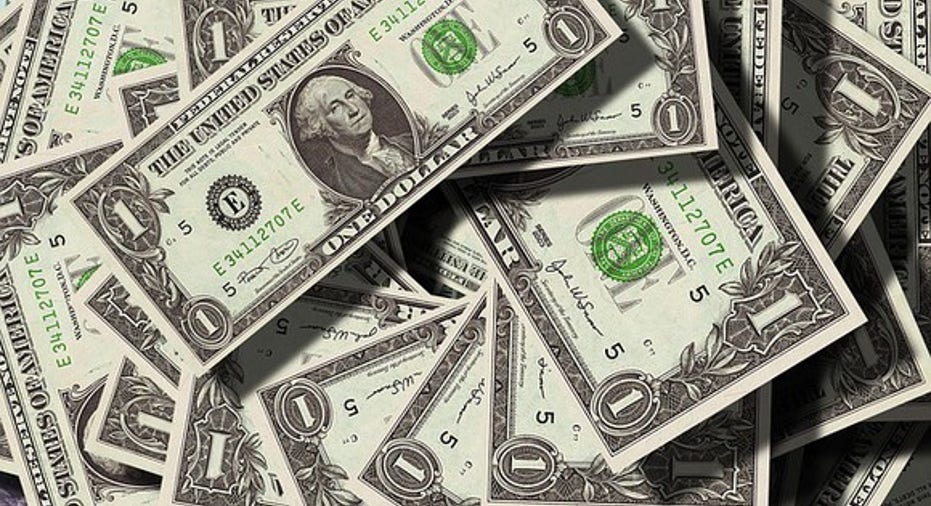King Dollar Defends Its Throne

After a tumultuous start this year, U.S. dollar exchange traded funds just registered one of their best monthly gains since 2015, and the greenback may have more room to run.
The U.S. Dollar Index (NYSE:DXY), which tracks USD moves against a basket of major currencies, dipped 5.5% to 93.08 on April 25, but the benchmark has since gained 2.7% and it may continue to strengthen ahead.
Supporting the USD outlook, the Federal Reserve is on course to tighten its monetary policy, whereas foreign central banks are expanding or adhering to loose policies in an attempt to bolster their respective economies.
In the U.S., we are seeing improving sings of economic growth, which has added to the speculation that the Federal Reserve would raise interest rates in June. For instance, the ADP National Employment report revealed private payrolls increased 173,000 last month after 166,000 jobs added in April, and a stabilizing labor market could add to the Fed's outlook for interest rate normalization. The Fed has already stated that it is looking at two interest rate hikes this year.
As we brace for rising interest rates, overseas central banks have implemented low interest rate and even negative interest rate policies, which have helped push down yields across the world - there is almost $8 trillion in global bonds with negative yields.
Consequently, loose monetary policies and the resulting poor yields abroad could push overseas investors to U.S. markets for better yield opportunities - for instance, yields on benchmark 10-year Germany bunds is 0.11% and yields on 10-year Japanese Government Bonds is -0.12%, compared to the 1.80% yield on 10-year Treasury notes. The greater demand for U.S. yield-generating assets would also bolster demand for U.S. dollars and support the greenback since foreign investors would essentially be exchanging their local currencies for U.S. dollars to invest in U.S. assets.
We are also currently in the midst of a long-term bull run in the U.S. dollar cycle. Unlike other assets, currencies typically oscillate between a bull and bear market - due to the foreign exchange dynamic, a currency may not indefinitely appreciate like a company stock. Historically, the U.S. dollar cycle, up or down, lasts around eight years, with downward cycles recording possible dollar depreciation up to 50 percentage points. Currently, we are into our fourth year of the U.S. dollar bull cycle after about a 30% gain, which may still leave the greenback with more room to run.
Investors who are bullish on the greenback can gain exposure to U.S. dollar moves through the PowerShares DB U.S. Dollar Index Bullish Fund (NYSE:UUP), which tracks the price movement of the U.S. dollar against a basket of currencies, including the euro 57.6%, Japanese yen 13.6%, British pound 11.9%, Canadian dollar 9.1%, Swedish krona 4.2% and Swiss franc 3.6%. UUP has increased 2.5% over the past month but is still down 3.7% year-to-date.
Additionally, the actively managed WisdomTree Bloomberg U.S. Dollar Bullish Fund (NYSE:USDU) tracks the dollar against a broader group of developed and emerging market currencies in an attempt to outperform the Bloomberg Dollar Total Return Index. Specifically, the fund's portfolio is comprised of euro 31.9%, yen 18.6%, Canadian dollar 11.4%, Mexican peso 9.8%, pound sterling 9.3%, Australia dollar 6.2%, franc 4.4%, South Korean won 3.4%, Chinese yuan 3.0% and Brazilian real 2.1%. The inclusion of emerging market currencies may help USDU outperform the dollar benchmark as emerging assets could underperform in a U.S. rising rate environment. USDU is up 3.2% over the past month but is still down 3.1% year-to-date.
In addition to capitalizing on potential U.S. dollar strength ahead, these USD-related ETFs could help investors hedge their international investment portfolios. International stocks and bonds come with currency risks as these investments are typically denominated in their local currencies, so a weakening foreign currency would translate to a diminished USD-denominated return. By including a small percentage allocation to U.S. dollar ETFs, investors can diminish forex risks.
Lastly, more skeptical USD traders who remain bearish on the dollar may look to the PowerShares DB US Dollar Index Bearish Fund (NYSE:UDN), which takes the inverse or short performance of the U.S. dollar against the same basket of six major currencies as UUP. UDN dipped 2.5% over the past month but gained 3.4% year-to-date.
This article was provided by our partners at etftrends.com.



















